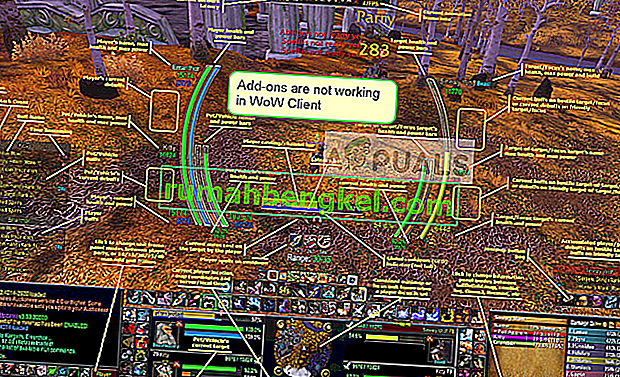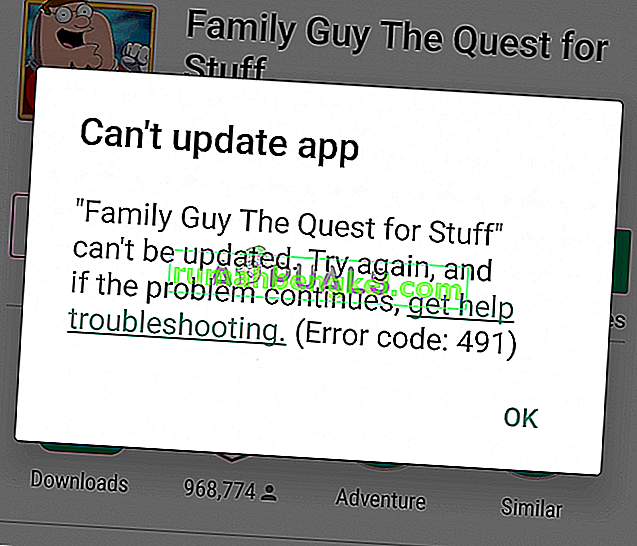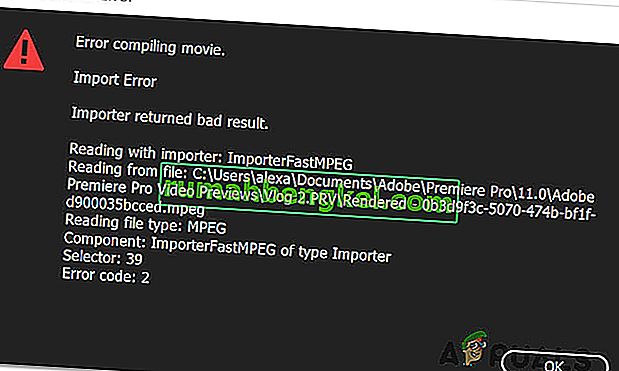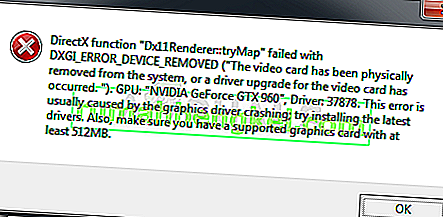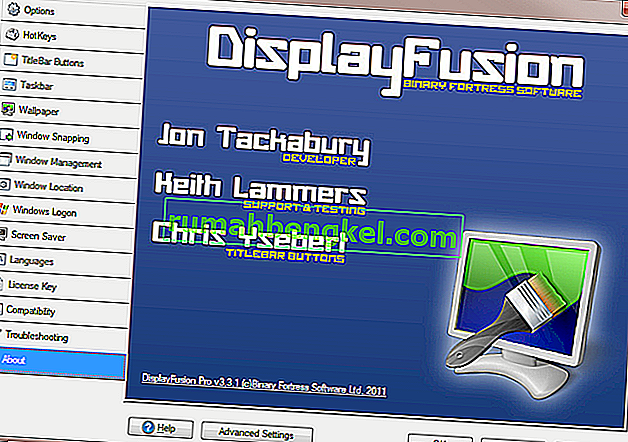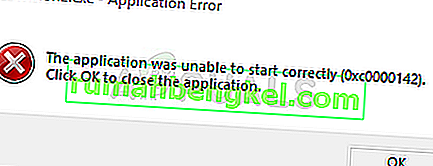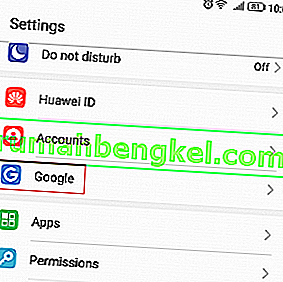Windows EdgeブラウザーがMicrosoftの以前のブラウザーであるInternet Explorerを大幅に改善したことは間違いありません。しかし、Windows Edgeにはいくつかのバグがあり、完璧とは言えません。Microsoft Edgeの使用中に直面する可能性のある問題の1つは、クラッシュです。Microsoft Edgeを開くと、すぐに閉じます。一部のユーザーにとっては、1〜2秒間開いたままで、他のユーザーにとってはすぐに閉じます。このエラーは明らかに、ユーザーがMicrosoft Edgeを使用できないようにします。これは、メインブラウザーとしてMicrosoft Edgeを使用している場合は特に、面倒です。ただし、このエラーはMicrosoft Edgeにのみ影響し、他のブラウザーは問題なく機能することに注意してください。したがって、Microsoft Edgeで問題が発生している間は、Mozilla FirefoxまたはGoogle Chromeを使用できます。
問題は、Windowsの担当者が取り組んでいるWindowsのバグが原因です。そのため、最近Windows Updateを実行した場合、この問題が発生する可能性が最も高くなります。ただし、良いニュースは、これは次のアップデートで解決されることです。それまでは、以下の方法で問題を解決できます。

一般的なトラブルシューティングを試してください。それでも問題が解決しない場合は、詳細に示されている方法に進んでください。
一般的なトラブルシューティング
これらは、解決方法の詳細に入る前に実行する必要があるいくつかの一般的なトラブルシューティング手順です。これらの一般的なソリューションは、Edgeが開いている場合にのみ機能し、まったく開かない場合は無視して、方法1に進みます。
キャッシュの消去
- Microsoft Edgeを開きます。
- [その他](3つのドット)ボタンをクリックし、[ 設定 ]を選択します。
- クリックしてクリアするために何を選択して下のクリア閲覧データ。
- [ キャッシュデータのみ]を選択し、[ クリア ]をクリックします。

ブラウザをリセット
- ホールドWindowsキーを押しRを
- タイプコントロールキーを押してください
- [ ネットワークとインターネット]をクリックします
- [ インターネットオプション]をクリックします
- 「詳細」タブをクリックします
- リセットをクリックします
- コンピュータを再起動してください
トラブルシューティングを実行する
ここに移動して、実行トラブルシューティングをクリックします。画面の指示に従ってトラブルシューティングを実行します。
方法1:Microsoft Edgeをアンインストールして再インストールする
注:このメソッドは、お気に入りまたはMicrosoft Edgeブラウザーに関連するその他の設定を削除します。したがって、ご自身の責任でこの方法に従ってください。変更を元に戻す場合に備えて、復元ポイントを作成することもお勧めします。
Microsoft Edgeをアンインストールしてから再インストールすると、ほとんどすべての人の問題が解決します。Microsoft Edgeをアンインストールするには、特定のMicrosoft Edgeのフォルダの名前を変更するか削除する必要があります。ただし、そのフォルダーはデフォルトで非表示になっているため、非表示のファイルとフォルダーが表示されることを確認する必要があります。これを行うには、以下の手順に従ってください
- ホールドWindowsキーを押しEを
- 表示をクリックします
- 非表示のアイテムと言うオプションをチェックしてください
Microsoft Edgeのアンインストール
次の手順に従って、Microsoft Edgeをアンインストールします
- コンピューターを再起動して、アンインストールプロセスを妨害するため、Microsoft Edgeのファイルが開いていないことを確認します。
- Windowsキーを 1回押す
- [検索の開始]ボックスに「cmd」と入力します
- 検索結果に表示されるコマンドを右クリックし、[ 管理者として実行]を選択します
- 以下のコマンドを入力してEnterキーを押します


- 以下のコマンドを入力してEnterキーを押します
REN C:\ Users \ username \ AppData \ Local \ Packages \ Microsoft.MicrosoftEdge_8wekyb3d8bbwe edge.old

注:「[ユーザー名]」をコンピュータのユーザー名に置き換えます
- 手順6を繰り返して、フォルダーの名前が変更されていることを確認します。フォルダの名前を変更すると、Windowsが指定されたファイルを見つけられないなどのエラーが表示されます。
エラーが発生した場合は、フォルダ名とパスが正しいことを確認してください。(Packages \に移動すると、これらを手動で取得できます
あなたが表示された場合、アクセス拒否エラーまたはその他のエラーを、あなたは2つのオプションがあります。Windowsエクスプローラーからフォルダーの名前を変更するか、別のアカウント(管理者)に切り替えて、そこからフォルダーの名前を変更します。両方の手順を以下に示します
ウィンドウズ・エクスプローラ:
- コンピュータを再起動してください
- ホールドWindowsキーを押しRを
- 次のように入力して押します。
C:\ Users \%username%\ AppData \ Local \ Packages \ Microsoft.MicrosoftEdge_8wekyb3d8bbwe
- RoamingStateフォルダーを右クリックし、[ 削除 ]をクリックします。
- コンピューターが許可を求めるかどうかを確認する
- ホールドWindowsキーを押しRを
- Type C:\Users\%username%\AppData\Local\Packages\ and press Enter
- Locate and right click the folder named MicrosoftEdge_8wekyb3d8bbwe and select Rename. Rename this folder too Microsoft.MicrosoftEdge_8wekyb3d8bbwe.OLD and press Enter
Switching Accounts:
Sometimes you might need to switch to a local account (from your Microsoft Account) to rename the Microsoft Edge folder. This always lets you rename the folder but it takes more time
- Press Windows Key once
- Select Settings
- Click Accounts
- Click Sign in with a local account instead
- Enter the password of your current Microsoft account
- Type in your username and password.
- Click Next
Now you will sign out from your Microsoft Account and sign in to your local account. Once you are signed in, repeat the above-given steps to rename the Microsoft Edge folder. You can use wither the Command Prompt way or the windows Explorer way.
Reinstalling of Microsoft Edge
The above steps should uninstall Microsoft Edge from your computer. Now you can reinstall the browser by following steps
- Press Windows key once
- Type Powershell in the Start Search box
- Right-click on the PowerShell that appears in the search results and select Run as administrator
- Type cd c:\users\[username] and press Enter. Replace “[username]” with your computer’s username. Also, keep in mind if your username has more than one word then write it in quotations. For example users\”John boy”.
- Type the following and press Enter:
Get-AppXPackage -AllUsers -Name Microsoft.MicrosoftEdge | Foreach {Add-AppxPackage -DisableDevelopmentMode -Register "$($_.InstallLocation)\AppXManifest.xml" -Verbose}
- Wait until the processing is finished.
- Type exit and press Enter once the process is finished
Now your Microsoft Edge is installed back and it should work fine.
In case of errors:
If you see any errors then do the following:
- Hold Windows key and press R
- Type %SYSTEMROOT%\SystemApps and press Enter
- Locate and right-click the folder named MicrosoftEdge_8wekyb3d8bbwe and select Rename. Rename this folder to Microsoft.MicrosoftEdge_8wekyb3d8bbwe.OLD and press enter
- Now press Windows key once
- Type cmd in the Start Search box
- Right-click on the cmd that appears in the search results and select Run as administrator
- Type sfc /scannow and press Enter
- Once it is finished close the Command Prompt
- Press Windows key once
- Type Powershell in the Start Search box
- Right-click on the PowerShell that appears in the search results and select Run as administrator
- Type the following and press Enter:
Get-AppXPackage -AllUsers -Name Microsoft.MicrosoftEdge | Foreach {Add-AppxPackage -DisableDevelopmentMode -Register “$($_.InstallLocation)\AppXManifest.xml” -Verbose}

Once it is finished, you should be good to go.
Method 2: Switching Accounts
This isn’t a solution but more of a hack for this problem because it doesn’t actually solve the problem. You can get around the problem by switching to another account. The problem is mainly caused in you are signed in with your Microsoft Account.
So as long as you aren’t signed in with your Microsoft Account, Microsoft Edge should work fine. To switch to a local account, follow the steps given below
- Press Windows Key once
- Select Settings
- Click Accounts
- Click Sign in with a local account instead
- Enter the password of your current Microsoft account
- Type in your username and password.
- Click Next
Now you will sign out from your Microsoft Account and sign in to your local account.


